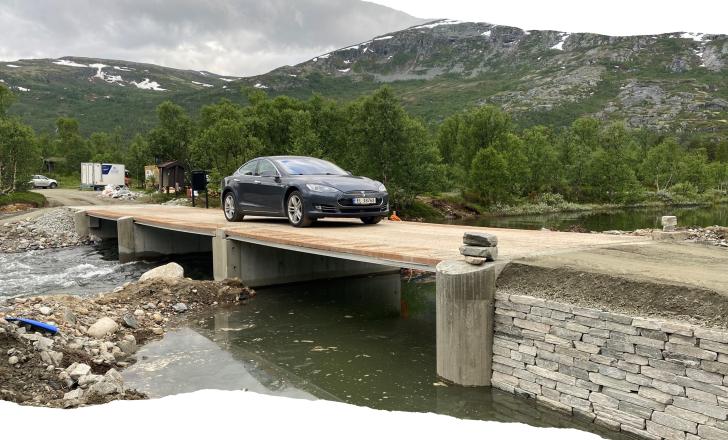
What is believed to be the first bridge to combine clay-based concrete and aluminium in the main structure has opened in Norway.
The bridge, with a permissible eight-tonne axle load, is made with aluminium profiles extruded from low-carbon aluminium from a primary aluminium plant in Sunndal, Norway. The bridge deck profiles are connected by dowels to the newly developed, environmental friendly concrete with an extraordinarily low CO₂ footprint compared with traditional concrete, according to Hydro.
The aluminium plant is operated by Hydro, a Norwegian global producer of aluminium. The bridge is part of a research project led by Hydro and called DARE2C – Durable Aluminium Reinforced Environmentally Friendly Concrete Construction.
“Aluminium corrodes in the highly alkaline environment in today’s concretes,” said Grete Hjetland, DARE2C project manager and chief engineer at Hydro. “On the other hand, in development of more environmentally friendly clay substituted cements, the steel reinforcement is not protected due to the low pH. The idea behind the research project is to hit two birds with one stone by combining low-carbon aluminium reinforcement with an extraordinary low-carbon concrete.”
Hjetland said that together, they make a sustainable and durable material for the future, particularly suitable in corrosive environments. As aluminium is stable towards the environment, the concrete can then be designed with respect to strength class rather than environment classes.
Steel is three times as stiff as aluminium, but weighs about three times as much. Aluminium, on the other hand, is easy to shape and can be cast or extruded. It can also be processed into geometries that provide the same stiffness as steel, despite the lower E-modulus. Concrete cover can be reduced to just ensuring stress transfer or no coverage at all. Therefore, one can build with less concrete and with concrete composed of less cement, which provides great environmental benefits.
“Aluminium reinforced concrete constitutes a more sustainable concrete,” said Hjetland.
Using aluminium as reinforcement in concrete enables the use of concrete mixes where more than 50% of the cement can be substituted with sustainable binders. The result is a concrete that requires far less energy and CO₂ emissions to produce slimmer, lighter concrete structures with a long service life. It is also compatible with scrap-based aluminium.
Several possible aluminium alloys, including recycled scrap material, have been identified as suitable for concrete reinforcement. The participating partners involved in the project include representatives from the entire value chain in a building process.
Partners in the consortium are Hydro, Norwegian University of Science and Technology (NTNU), SINTEF, Dr.techn. Olav Olsen, Christie & Opsahl, Overhalla Betongbygg, Sika Norge, Heidelberg Materials, Oshaug Metall and Nordic – Office of Architecture.










